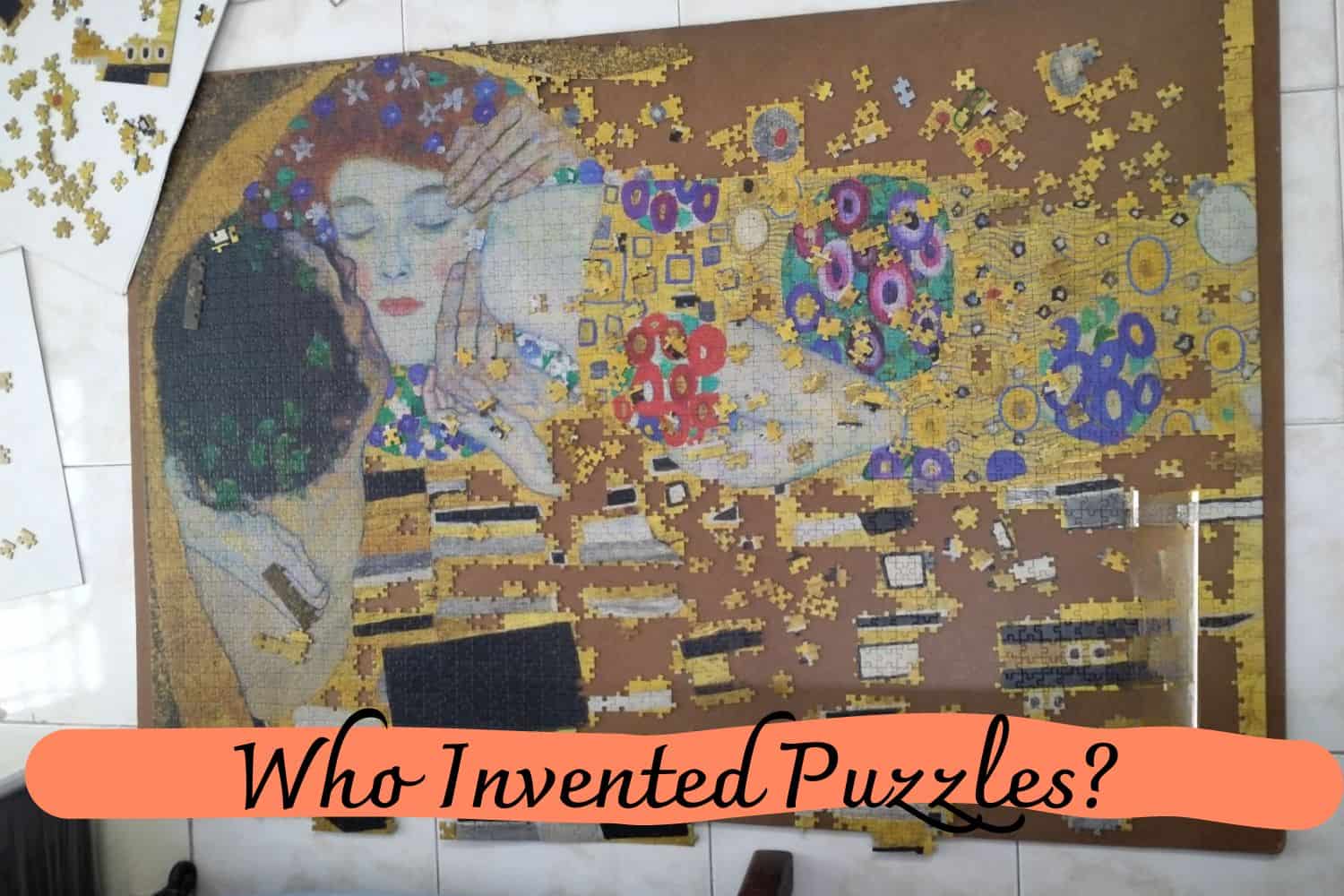You have ever wondered who invented puzzles? We answer this age-old question and dive into its history to uncover more interesting facts.
Who Invented Puzzles?
Do you have a passion for puzzles? Are you determined to learn the history behind these clever inventions? Look no further—we’ve got the answers! Digging back centuries, we will explore who invented puzzles and how they developed over time.
This journey through time will reveal just how advanced our ancestors were in creating mind-boggling challenges with simple tools at their disposal.
John Spilsbury is the innovative London cartographer and engraver credited with creating the world’s first “jigsaw” puzzle in 1760. Imagine a map meticulously glued to a sturdy wooden surface, meticulously cut into pieces along the precise lines of each country. This groundbreaking invention would pave the way for countless hours of entertainment and mental stimulation.
The creativity of mankind has always been remarkable, even before the invention of computers! So prepare yourself (and your brain) as we dive deep into discovering who was responsible for beginning our puzzling adventures!
The Origins of “Jigsaw Puzzles”: A Misnomer Explained

Have you ever wondered why puzzles are called “jigsaw puzzles”? The answer is quite fascinating. In the 1880s, the term “jigsaw” became associated with puzzles when fretsaws, a popular cutting tool, were used to create intricate shapes.
Surprisingly, despite their name, jigsaws were never actually used in the puzzle creation process. The term “fretsaw puzzles” just doesn’t have the same catchy ring as “jigsaw puzzles.” And let’s be honest, wouldn’t you rather jig than fret?
The History of Jigsaw Puzzles: From Ancient Brain Teasers to Modern Challenges
Jigsaw puzzles have a rich and fascinating history that spans over 2,000 years. While there isn’t a single inventor credited with their creation, the concept of challenging the human intellect is an age-old idea.
The earliest forms of puzzles were likely spoken-word riddles. However, historical records show that as far back as 2300BC, the ancient Greeks and Egyptians were creating labyrinth or maze drawings to engage the minds of early puzzle enthusiasts.
But what about puzzles that can be physically assembled? Enter Archimedes, the Greek mathematician. In 250 BC, he is believed to have created one of the first puzzle-like brain-teasers known as the Ostomachion.
Consisting of a square cut into 14 pieces of various shapes and sizes, the challenge lies in creating new patterns rather than simply putting together a predefined image. Among the possible shapes that can be formed are a ship, an elephant, and even a barking dog!
From ancient times to now, jigsaw puzzles have continued to captivate and challenge individuals of all ages. Their evolution throughout history is a testament to humanity’s enduring fascination with puzzles and our desire to engage our intellect in entertaining and fulfilling ways.
Who Invented Puzzles?
Unearth the captivating history of jigsaw puzzles, a timeless pastime that traces its roots back to the mid-18th century. Journey alongside John Spilsbury, an ingenious cartographer from London, who revolutionized the world of education with his remarkable invention in 1760.
Originally crafted as an engaging tool to teach geography, Spilsbury ingeniously glued a map onto a wooden board and meticulously cut it into small, intricate pieces along the borders of different countries.
Little did he know that this innovation would lay the foundation for the very first jigsaw puzzle.
Initially known as “dissected maps,” these extraordinary creations expanded beyond geography to encompass a diverse range of captivating subjects, including botany, history, alphabets, and zoology.
Such was the popularity of these original puzzles that even the children of King George III and Queen Charlotte, under the guidance of their royal governess, Lady Charlotte Finch, eagerly embraced the joy and learning offered by these enthralling puzzles.
It didn’t take long for the magic of puzzles to captivate a wider audience, capturing the hearts of adults worldwide. Craftsmen of various backgrounds soon joined the puzzle-making phenomenon, creating their unique versions.
By the early 1900s, jigsaw puzzles had blossomed into a beloved pastime embraced by people of all ages across the globe.
Even today, the charm of jigsaw puzzles endures, standing as a cherished hobby for individuals spanning generations. We owe this cherished form of entertainment to the pioneering genius of John Spilsbury, whose ingenuity continues to captivate puzzle enthusiasts to this day.
Venture into the world of puzzles, where the allure of these timeless brainteasers binds commoners and royalty alike.
As a delightful tidbit, even the late Queen Elizabeth II indulged her penchant for puzzling, solidifying the universal appeal and endless delight found within each carefully placed piece.
Discover the Phenomenon of Jigsaw Puzzles
During the challenging times of the Great Depression, jigsaw puzzles emerged as a popular source of entertainment for families facing financial constraints.
These affordable and enduring puzzles provided an engaging activity for all. However, the occasional challenge of missing pieces could dampen the experience.
Notably, jigsaw puzzles transformed, becoming increasingly intricate and captivating for adults. The imagery shifted from geographic and natural motifs to include product advertisements and promotional materials.
Many companies even distributed puzzles featuring their products, successfully fueling the spirit of consumerism.
Experience the timeless allure and evolving nature of jigsaw puzzles, spanning generations and captivating enthusiasts of all ages.
Conclusion
In conclusion, puzzles bring a sense of joy and accomplishment to children and adults alike. It’s no wonder why puzzles have grown overwhelmingly popular since the 1700s. The invention of the puzzle has been credited to John Spilsbury who created the first known example in 1767.
However, there is evidence to suggest that puzzles existed even before Spilsbury’s version. While it may remain a mystery who truly were the innovators of this delightful game, one thing remains certain – puzzles will continue to spark joy and entertainment for years to come!
People should take time out of their busy lives and give puzzles a try – it is sure to be an experience they won’t forget! So grab some friends, and family or get cozy on your own, pick some pieces off the shelf, and let the fun begin.
Thanks for reading our article Who Invented Puzzles? If you want to know more information, visit our website here.
Read more:
A Puzzling History of Jigsaw Puzzles

